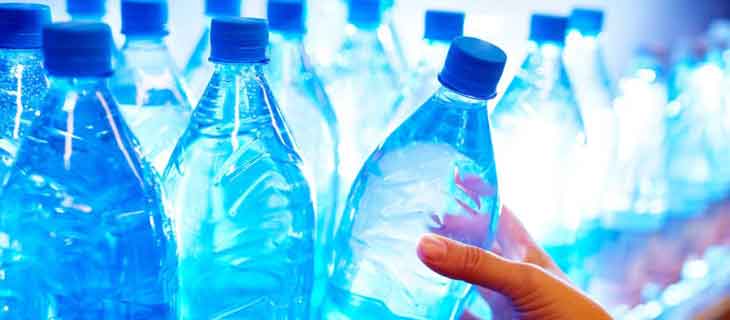Why PET Plastic Bottles Triumph Over Glass
One of the most popular polymers, Polyethylene Terephthalate (PET) is used by multiple bottle manufacturing companies for packaging. It is produced by polymerization of ethylene glycol and terephthalic acid. Some of its most important properties include its resistance to water, its high strength to weight ratio, the fact that it is virtually shatterproof. Certainly, there will always be a need for glass, but for many industrial and consumer markets, PET is becoming the material of choice and here’s why.
Durable and Great Design Flexibility:
PET bottles are extremely durable and impact-proof. They require less protection during transportation than glass bottles. This can help manufacturers save on cost when it comes to additional packaging. Furthermore, PET bottles offer endless possibilities when it comes to design. They offer great flexibility compared to their glass counterparts and can be molded into any shape, form or size. This enables brands to create their own identity and come up with unique designs.
Enhanced Safety:
Glass bottles are not durable and can easily shatter. This can create a potentially dangerous environment and the shards can create a safety hazard. This can hamper the transportation, retail, and the consumer. PET bottles, on the other hand, are shatter-proof and durable.
When addressing safety for food, beverage, pharmaceutical, medical and personal care applications, PET is recognized by health authorities around the world. What’s more, PET bottles are known as the cleanest and the greenest types of plastic. It does not contain bisphenol-A (BPA) which is an industrial chemical that has been used to make certain polymers and is known to cause health concerns.
Better Hygiene:
FDA has cleared PET bottles for single and repeated use. PET is hygienic and incredibly resistant to micro-organisms. Moreover, it will not chemically or biologically degrade as it does not react with food and beverages. New and re-used PET bottles have been tested by regulatory authorities for harmful substances and they have been cleared for hygiene. According to the PET Resin Association (PETRA), PET is strong, hygienic, retains freshness and is the world’s packaging choice for many foods and beverages.
Recyclable and Sustainable:
PET plastic is 100% recyclable and is the most recycled plastic in the world. They are extremely easy to recycle because at low temperature the polymer chain breaks down. The polymer chain does not undergo degradation during the recycling process. 5,764 million pounds of PET bottles were recycled in 2013 and 85% of those bottles were used for food and beverages. According to PLANT Apothecary, PET plastic when recycled has been proven to not leach harmful chemicals into the products it contains.
Since PET bottles are lightweight and durable they use less fuel and energy when compared to glass. They, therefore, create fewer greenhouse emissions and less solid waste. According to an article published by the Washington Post which discusses the disadvantages of glass peanut butter jars, PET plastic was better for the environment and cut costs.
PET bottles have always known to be been versatile, economic and safer than glass. Therefore, they will offer a better alternative over glass bottles in many applications. Are you considering replacing glass products in your business with PET plastic? If yes, then register for Plastivision trade show. It is a great platform for you to showcase your product range and network with industry professionals. Book your booth today!
Leave a Reply Cancel reply
Recent Posts
- Understanding The Materials That Are Used To Build Plastic Toys
- All You Need To Know About Food-grade Plastics
- A Glance At The Materials That Boost The Performance Of Plastics
- Understanding The Importance Of Exploring New Business Opportunities In The Plastic Industry
- Understanding The Importance Of Investing in R&D For The Plastic Industry
Categories
- 3D Printing
- AIPMA
- Automation
- Automobile Sector
- Bio Plastics
- Environment
- Innovations In Recycling
- Latest Innovations
- Molds & Dies
- News
- Packaging Industry
- Plastic
- Plastic Application
- Plastic Industry
- Plastic Market
- Plastic Myths
- Plastic News From The World
- Plastic Packaging
- Plastic Products
- Plastic Recycling
- Plastic Solar Cells
- Plastic Toys
- Plastic Waste
- Plastic World
- Plastics
- Plastics And Their Applications
- Plastics In Agriculture
- Plastics In Healthcare
- Plastics In Medical Industry
- Plasticulture
- Processing Machinery
- Recycling Machines
- Robotics
- Uncategorized
- Virtual Reality
Archives
- November 2023 (3)
- October 2023 (2)
- September 2023 (3)
- August 2023 (3)
- July 2023 (3)
- June 2023 (3)
- May 2023 (2)
- April 2023 (2)
- March 2023 (2)
- February 2023 (2)
- January 2023 (2)
- December 2022 (3)
- November 2022 (1)
- October 2022 (1)
- September 2022 (2)
- August 2022 (1)
- July 2022 (3)
- May 2022 (3)
- March 2022 (2)
- February 2022 (1)
- January 2022 (1)
- September 2021 (2)
- August 2021 (3)
- July 2021 (4)
- June 2021 (4)
- May 2021 (3)
- April 2021 (2)
- March 2021 (4)
- November 2019 (8)
- October 2019 (8)
- September 2019 (8)
- August 2019 (8)
- July 2019 (8)
- June 2019 (8)
- May 2019 (8)
- April 2019 (8)
- March 2019 (8)
- February 2019 (11)
- January 2019 (8)
- December 2018 (8)
- November 2018 (12)
- October 2018 (12)

